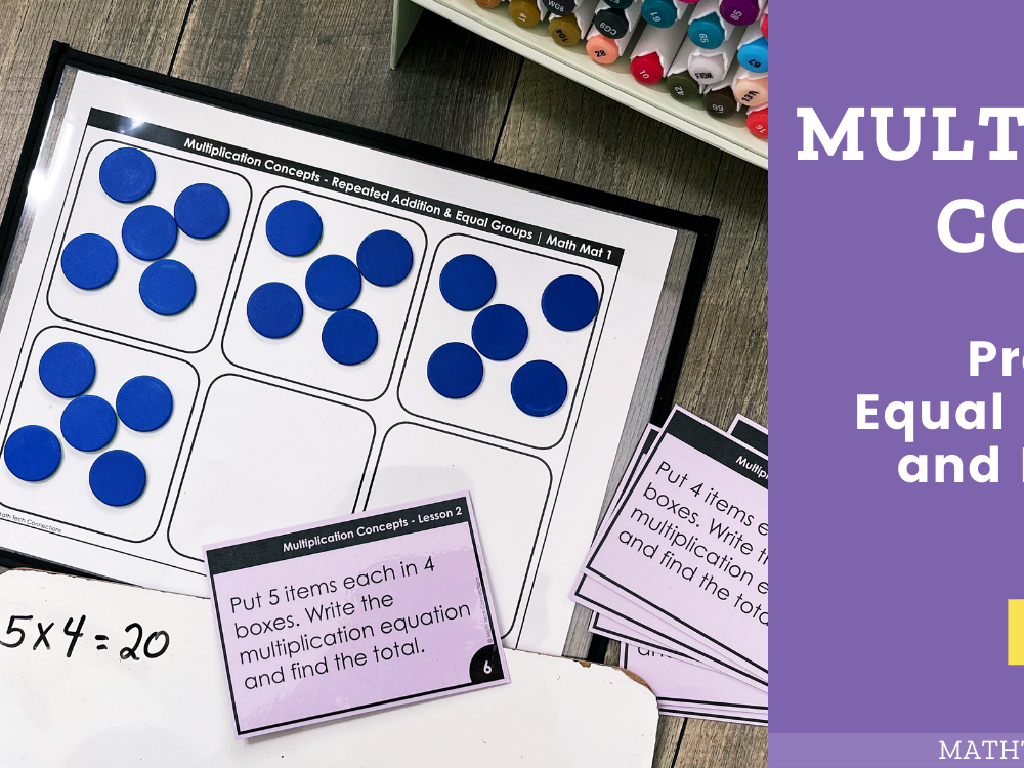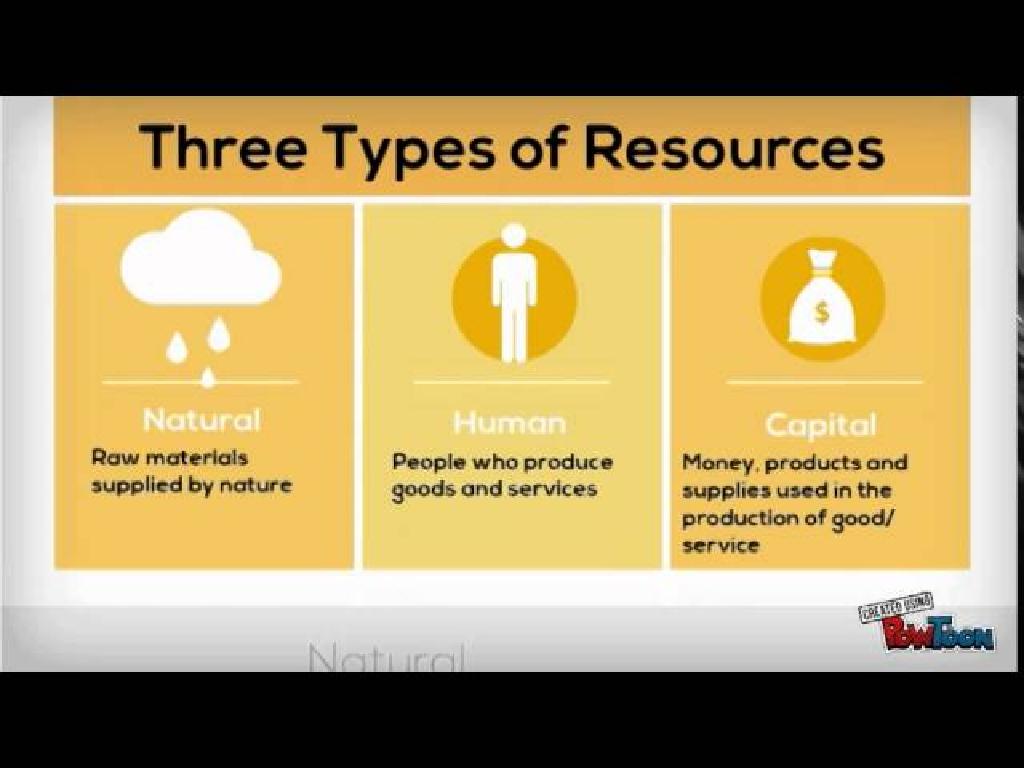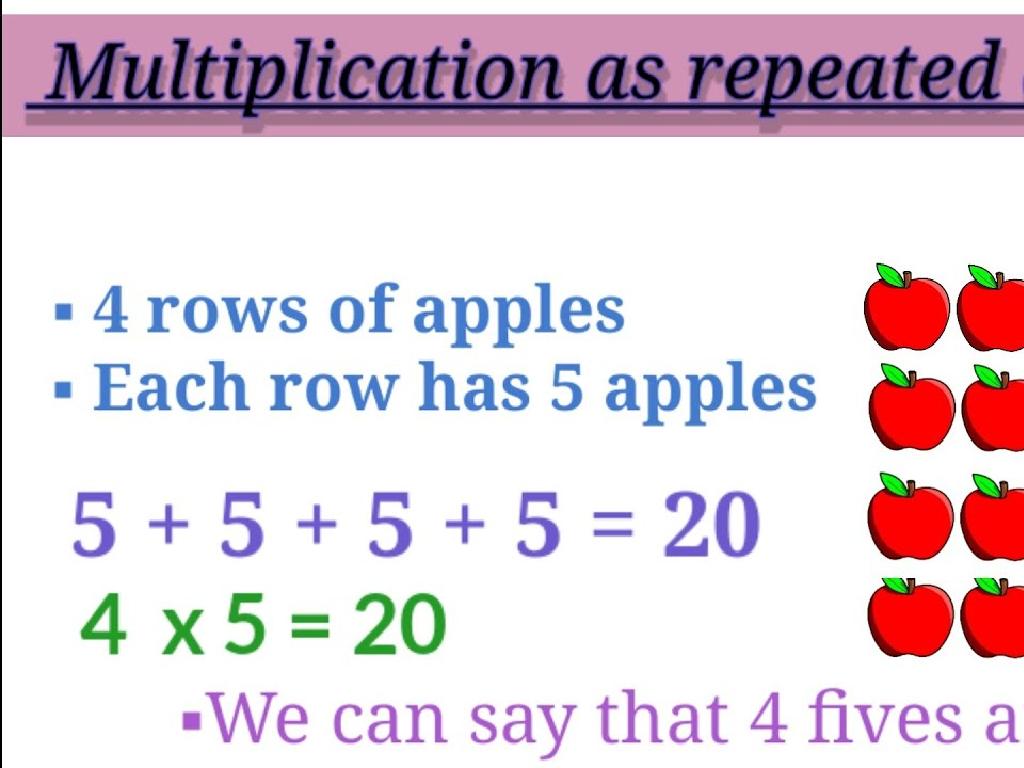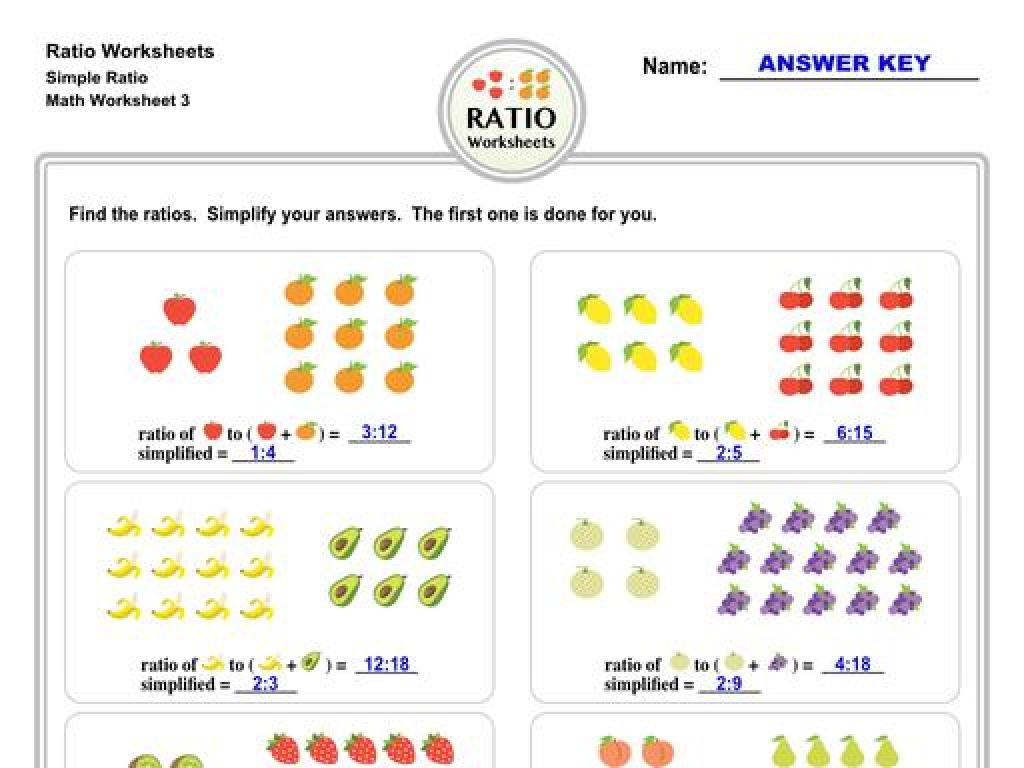Create Line Plots
Subject: Math
Grade: Second grade
Topic: Data And Graphs
Please LOG IN to download the presentation. Access is available to registered users only.
View More Content
Exploring Line Plots in Data and Graphs
– What is a line plot?
– A graph that shows frequency of data along a number line
– Key features of line plots
– It has a simple scale and marks above numbers to show frequency
– Importance of line plots
– They help us see data trends and make comparisons easily
– Creating our own line plots
– We’ll draw a line plot using class data on favorite fruits
|
Begin the lesson by explaining that a line plot is a type of graph used to display data along a number line. Emphasize the simplicity of its structure and how it’s made by placing marks above numbers to represent frequency. Discuss the importance of line plots in visualizing data, identifying trends, and making comparisons. Engage the class by collecting data on a common topic, like their favorite fruits, and demonstrate how to create a line plot with this information. Encourage students to participate in plotting the data and interpreting the results together.
Understanding Data: Introduction to Line Plots
– Data is collected information
– Like how many books you read
– Counting and recording data
– We write numbers to show how much
– Examples: apples eaten, zoo animals
– Count apples each day, animals you see
– Introduction to line plots
|
This slide introduces the concept of data to second-grade students, explaining that data is information we gather about different things. It’s important to make the concept relatable by using examples they understand, such as keeping track of the number of apples they eat or the types of animals they see at the zoo. Emphasize that data can be counted and written down, which is a precursor to creating line plots. Line plots are a way to organize data visually, making it easier to understand and interpret. The goal is to prepare students for the next step, which is learning how to create and use line plots to represent data.
Understanding Line Plots
– What is a line plot?
– A graph that displays data along a number line.
– X marks on a number line
– Each ‘X’ above a number shows one item or occurrence.
– Count items with Xs
– Add an ‘X’ for each item to count them easily.
– Visualize data frequency
– Line plots help us see the number of occurrences clearly.
|
This slide introduces the concept of a line plot to second-grade students. A line plot is a simple and effective way to organize data on a number line where each ‘X’ represents one item counted. It’s a visual tool that helps students understand the frequency of data points. For example, if we have a number line showing the number of apples picked from a tree, each ‘X’ could represent one apple. If we picked 4 apples, we would place 4 ‘X’s above the number 4 on our line plot. This visual representation helps students quickly see how many items are in each category and is an excellent way to introduce them to data interpretation.
Creating Our Line Plot
– Begin with a number line
– Add an ‘X’ for each item counted
– If we have 3 apples, put 3 X’s above the number 3
– Let’s make a line plot as a class
– Understand how line plots work
– Line plots help us see how many of each item we have
|
This slide is designed to introduce second-grade students to the concept of line plots as a visual representation of data. Start by drawing a simple number line on the board. Explain that each ‘X’ represents one item and show them how to place ‘X’s above the corresponding number on the line plot for each item counted. Engage the class by creating a line plot together with data from the classroom, such as counting books, pencils, or fruits. This interactive activity will help students understand how line plots organize and display information in an easily interpretable way. Encourage students to ask questions and participate in the plotting process.
Let’s Make a Line Plot: Favorite Fruits
– Count classmates’ favorite fruits
– Place an X for each fruit vote
– Each ‘X’ represents one vote for a fruit
– Observe the line plot results
– A visual representation of our data
– Determine the most popular fruit
– The fruit with the most X’s wins!
|
This slide is designed to introduce second-grade students to the concept of line plots through a fun and engaging class activity. Start by discussing different types of fruits and ask each student to name their favorite. Tally the results and then show how to represent each vote with an ‘X’ on the line plot. Once all the data is plotted, guide the students to observe which fruit has the most X’s and thus is the most popular in the class. This activity not only teaches them how to create and read line plots but also incorporates counting and comparison skills. Encourage the students to discuss why it’s helpful to organize data visually and how it makes it easier to understand and interpret information.
Reading a Line Plot
– Count the X’s above each number
– More X’s mean more counts
– Find the item with most X’s
– Which number has the tallest stack of X’s?
– Spot the item with least X’s
– Look for the number with the smallest stack or no X’s
|
This slide is aimed at teaching second-grade students how to read and interpret data from a line plot. Start by explaining that each ‘X’ represents one count of an item. Then, guide the students to count the X’s above each number to determine how many times that item was counted. Ask questions like ‘Which item is the most popular?’ or ‘Which item is the least popular?’ based on the number of X’s. Encourage the students to observe and compare the stacks of X’s to draw conclusions about the data. For the class activity, you can have students create their own line plots using stickers or drawings to represent data from a class survey, such as favorite fruits or number of siblings.
Let’s Practice: Making a Line Plot
– We’ll plot our shoe sizes
– Count classmates’ shoe sizes
– How many have size 1, 2, 3, etc.?
– Mark counts on the line plot
– Use X’s to show each count
– See the shoe size pattern
|
This activity is designed to give students hands-on experience with creating line plots. Start by explaining what a line plot is and how it can be used to display data. Have each student look at their own shoe size and then work as a class to count how many students have each size. As they provide their data, mark it on a line plot on the board with an ‘X’ above the corresponding shoe size number. This visual representation will help them understand how line plots work and how to interpret them. Possible variations of the activity could include using different items to plot, such as favorite fruit or number of siblings.
Class Activity: Our Classroom Line Plot
– Collect data on monthly books read
– Each student marks the line plot
– Visualize our reading habits
– A line plot helps us see the data at a glance
– Discuss our class line plot
– We’ll talk about what our plot shows about us
|
This activity is designed to engage students with the concept of line plots by making it interactive and relevant to their experiences. Start by explaining what a line plot is and how it can be used to represent data. Have each student count the number of books they’ve read in the past month. Then, provide them with stickers or markers to represent their data on the line plot. Once everyone has had a turn, bring the class together to discuss the line plot. Questions for discussion: Which number of books was most common? How many books did the class read in total? This will help students understand how to interpret data from a line plot and see the practical application of data collection and representation.
Review: Understanding Line Plots
– Recap on line plots
A line plot shows data along a number line with X marks.
– Uses of line plots
They help us see how often things happen.
– Other data for line plots
What about favorite fruits or shoe sizes?
– Class discussion
|
This slide aims to consolidate the students’ understanding of line plots. Start by asking the class what they remember about line plots and how they are created. Discuss the importance of line plots in visualizing data and how they can help us count and compare information easily. Encourage the students to think of different types of data that can be represented on a line plot, such as the number of each type of fruit their classmates like, or the different shoe sizes in the class. Use this opportunity to foster a class discussion where students can suggest their ideas and understand that line plots are versatile tools for various data types.
Homework Challenge: Colorful Car Graphs!
– Observe car colors on your way home
– Create a line plot with your findings
– Use a ruler to draw straight lines and plot each car color you see
– Share your graph with the class
– Explain what your data tells us
– Does one color appear more than others? What does that mean?
|
This homework activity is designed to help students practice creating line plots, a fundamental skill in understanding data and graphs. Encourage them to pay close attention to the colors of cars they see on their way home from school. They should use a ruler to draw a neat, straight line plot, marking a point above the color label for each car they observe. In class, students will present their line plots and discuss their observations, such as which colors were most or least common and what that might suggest about car color popularity. This exercise will enhance their ability to collect, represent, and interpret data visually.






